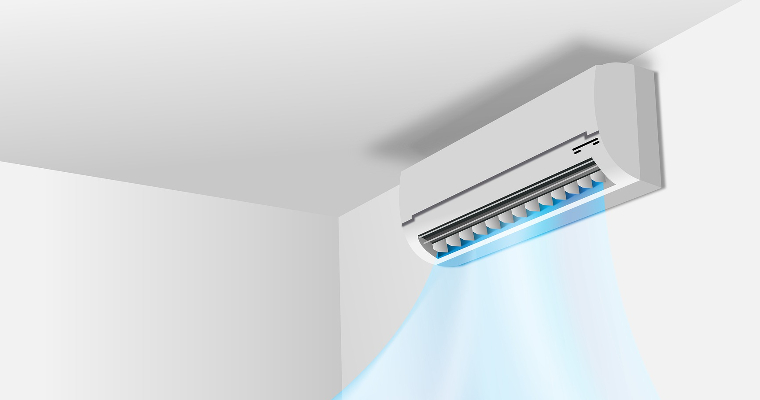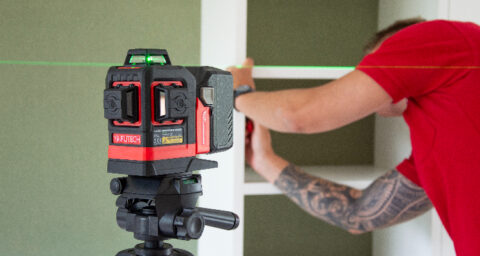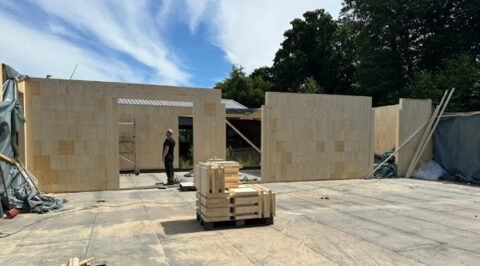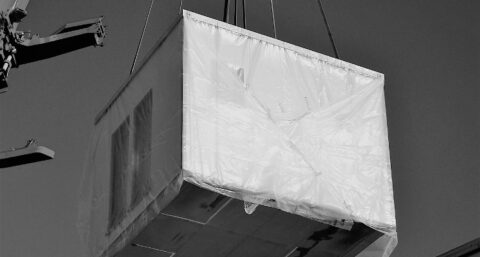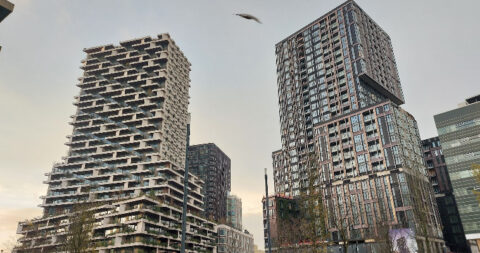Air conditioning is a proven method of cooling a room of choice to create a pleasant temperature there. Because a lot of moisture is removed from the air in the process, the relative humidity drops and the indoor climate feels even more pleasant. In addition, modern air conditioners can usually heat as well. What types of air conditioners are there actually?
Single split air conditioning
This type of air conditioning consists of two parts, an outdoor unit and an indoor unit, connected by ducts. This is air conditioning that is installed in a fixed location and is therefore not portable. A major advantage of a split unit is that the indoor unit is modest in size and makes a minimum of noise. The components with the highest noise production are located outside.
So there must be somewhere to put that outdoor unit, also taking into account things like legal noise requirements. The piping that runs between the two units can be neatly concealed inside, which is easiest to do in new construction or a renovation. Because there is one indoor unit, only one room can be cooled or heated. Think living room, bedroom, hobby room, home office, or an office space.
Multi split air conditioning
As with single split air conditioning, this is also a fixed air conditioning system. The big difference this time is that multiple indoor units can be connected to one outdoor unit. This allows you to cool multiple rooms independently, or heat them. In addition to multiple rooms at the same time, another scenario is to cool the living room and/or an office during the day, for example, and the bedroom in the evening or at night.
The temperature is adjustable for each room, but you cannot cool one room and heat another at the same time with this air conditioning system. A multi split air conditioner takes up less space than two single split air conditioners. It is important that your customer think carefully about the rooms to be cooled, because of the piping and installation of the indoor units.
Monoblock air conditioner
An indoor unit and an outdoor unit combined in one unit is also a possibility. Such a monoblock does make more noise because all the components are indoors this time. Also, a monoblock cannot be placed in any room because it usually has to be placed right against the outside wall. This is because of the double wall bushing located directly behind the unit, which is neatly covered on the wall side with a wall grille. This makes the monoblock air conditioner a low-threshold and relatively easy-to-install solution. A monoblock is also ideal in apartments and high-rise buildings, especially where an outdoor unit cannot or should not be placed on the facade, or if that is too complex an operation.
Mobile air conditioner
This is also a monoblock, but one on wheels. As a result, this air conditioner can easily be placed anywhere you want and also neatly stored away again should the air conditioner not be needed for a while. The unit itself can move with your customer. All you need is an electrical outlet and a window or door that can be left ajar to insert the exhaust tube to discharge the warm air. The latter is immediately a major disadvantage of this system, because warm air can easily penetrate through that crack. So seal it carefully.
A portable air conditioner is large, heavy and produces a lot of noise. Furthermore, its cooling capacity is limited compared to other air conditioner types. Nowadays, there is also a split-unit version, which is quieter and has more power.
As an installer, you obviously don't have work to do here, but you can advise your customer about the extra possibilities that a mobile air conditioner offers. Think as an addition to fixed air conditioning for something like a room that is too remote, but also because of the flexibility to place this device anywhere (temporarily).
VRF system
VRF systems are designed for large buildings. Think utilities, such as offices, hotels, healthcare, industry, hospitality, education and government. VRF stands for Variable Refrigerant Flow. Thanks to the adjustable refrigerant distribution, a large number of rooms can be cooled or heated completely independently of each other.
By combining a VRF system with an air handling unit, ventilation, humidity and air purification can also be optimally controlled, creating a complete climate system. Depending on the configuration, a VRF system can heat and cool at the same time. It is therefore ideal for heating certain rooms while keeping other rooms (always) cool.
Assembly
We go back to single and split air conditioning systems for a moment. Because with these air conditioners, you have a choice of placement options. For example, you install a wall air conditioner preferably high on the wall, making it applicable almost anywhere and not at the expense of free space. A ceiling air conditioner is also widely applicable, only this time you place it directly against or under the ceiling, provided it is not a suspended ceiling.
A cassette air conditioner is designed to be discreetly concealed in a suspended ceiling, which requires a minimum installation height. Only the underside, which contains a number of air vents, remains visible. A variation on this is the duct unit, which again is mounted invisibly behind a suspended ceiling. This time, air ducts run from a kind of base station to small discharge grilles mounted at various points in the suspended ceiling.
